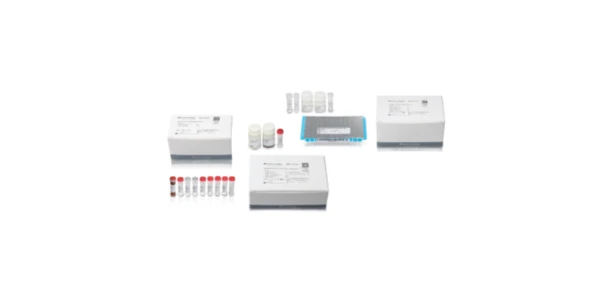The Rotovap: Fundamentals and Trends in Rotary Evaporator Technologies
A review of the various parts and operating conditions of rotary evaporation systems, with a brief discussion of trends and new products
Often called simply the rotovap, the rotary vacuum evaporator device was originally designed and first commercialized in the 1950’s. Since its modest beginnings, the rotovap has found many scientific uses beyond chemical synthesis, including a diversity of extraction and distillation methods, covering a wide range of benchtop to process scale applications. Modern rotovap technologies support advanced methods which require precise temperature and pressure control, in addition to robust and demanding operation conditions.
How to Use a Rotary Evaporator
The concept of the rotovap entails motorized rotation of a solvent under reduced pressure.
- Lowering the pressure by the use of a vacuum pump effectively reduces the boiling point of the solvent.
- Combined with heating, the newly evaporated solvent travels to a condenser vessel or coil where vapor is then converted into liquid form and separated into a collection flask.
- By precisely varying pressure and temperature, a rotary evaporator can separate chemical constituents from a solvent mixture based primarily on the differences in boiling (and condensation) points of the components.
Rotary Evaporator Parts
There are several main parts of a rotovap:
- A motorized unit rotates the starting solvent flask, which is partially submerged in a temperature-controlled water bath.
- A vacuum system and vapor duct allows the direct routing of evaporated solvent to the condenser.
- A condenser provides decreased temperature required to convert the vapor into liquid.
- A condensate collection flask catches the condensed liquid.
- A motorized unit allows quick lifting of the evaporation flask from the water bath to prevent sample loss.
Evaporator and Condenser
The evaporator and condenser work in close harmony.
- Solvent evaporation must occur with precision to selectively isolate the desired solvent, preventing co-evaporation or contamination with constituents of similar boiling points.
- The condenser must allow effective condensation relative to the objective of the separation, e.g. batch extraction versus stepwise distillation.
Evaporator Coil
The evaporation coil is typically a glass tube encased in a glass housing.
- This is either attached to a water aspirator, submerged in a cold bath, or placed in a refrigerated bath.
- The required precision of temperature control will depend on the complexity of the isolation method.
Vacuum Pump for Rotary Evaporation
Of critical importance in rotary evaporation processes is the maintenance of precise pressure in the system.
- Variations due to improper seals or inadequate vacuum pump performance can incur wide fluctuations in isolated compound yield and purity.
- Modern vacuum systems allow programmable methods, digital control, and sensors to ensure reliability and performance.
Solvent Evaporation - Rotary Evaporation Solvent Chart
Rotovap performance is best when the desired solvent isolates have low and distinctly different boiling points.
- Such solvents enable separation without extreme low vacuum pressures or excessively high heating temperatures.
- Thus, ultra-low vacuum consistency becomes less of a concern as does isolation of heat-sensitive compounds.
- A solvent evaporation chart assists in determining the best methods and evaporation conditions for a given project.
Rotovap Distillation
The more general term of distillation refers to isolation of distinct solvents from more complex mixtures.
- Of course, the rotovap builds off the distillation concept, with fine control of temperature, pressure, and timing to provide precise fractionation.
- Beyond these, there are additional elements that help drive the speed and accuracy of the rotovap process – and the throughput as well.
Thin Film Evaporation - Falling Film Evaporation - Wiped Film Evaporation
The rotating flask of the rotovap, through centrifugal and frictional forces, creates a thin film of solvent spread over a relatively large surface area of the flask. In combination with heat and vacuum, this solvent spreading leads to quick, gentle evaporation – avoiding the propensity for solvents to “bump”, or suddenly boil and expand from the reaction vessel.
Rotovaps are typically used in batch separation processes.
- On the other hand, continuous evaporation processes can make use of thin or wiped film evaporators.
- These systems use motorized “wipers” to continuously spread solvent on the surface of a heat-modulated vessel.
- The vapor travels upward through a condenser tube where the distillate is subsequently isolated and collected.
- Advantages of these systems include reduced time of exposure of the solvent to elevated temperatures as well as the ability to operate under continuous flow conditions.
- These come at the cost of requirements for complex and often more expensive systems – the utility of which may or may not be needed for a given application.
Rotary Evaporation Manufacturers
Buchi is known as a popular manufacturer of rotary evaporation systems, having been in the business for many years and through many product advancements. Buchi currently offers a range of systems to suit a range of applications, from entry level to R&D lab and quality control. Advanced features such as wireless touchscreen control, integrated vacuum pumps, and energy-saving recirculating chillers add to the capabilities and versatility of these devices.
View Buchi rotovap listings at LabX.com
Heidolph offers a number of state-of-the-art devices all built with the quality, performance, and reliability for which the company is well-known. The Hei-VSP Series incorporates a new seal system, speed-regulated vacuum pumps, as well as a new generation of high-performance condensers designed to ensure highest solvent recovery, system reliability, and energy efficiency.
The Hei-VAP Value allows direct control while the Hei-VAP digital enables superior ease-of-use due to direct control and digital display. The Hei-VAP Advantage supports a range of possibilities and custom methods. The Hei-VAP Precision utilizes integrated vacuum control to maximize performance. A host of additional components are available including: valve-regulated vacuum pumps, stand-alone chillers, RPM-regulated vacuum pumps, distimatic benchtop devices for continuous operation, and others.
View Heidolph rotovap listings at LabX.com
KNF is a company well-known for innovations in vacuum pump technologies. In addition to a wide array of pump configurations and complete vacuum systems, they offer a line of rotary evaporator solutions. KNF has taken a solutions first approach in designing the devices. What aspects are key in performance? What features are needed for simple and reliable operations? Results of this approach include units built for rugged and reliable use, while incorporating KNF precision vacuum technology.
View KNF rotovap listings at LabX.com
Best Rotary Evaporator
The best system is that which is ideally suited for your needs.
- Some labs require a rugged instrument which can be manually controlled by a team of users or students.
- Others may require a system with high precision and throughput, complete with integrated speed-controlled vacuum pumps and centralized chillers.
- Still others may need a system that can perform at process-scale rates, under demanding conditions.
View our expanding catalog of resources content for further insight.
View Vacuum Pumps and Evaporator/Concentrator listings at LabX.com










